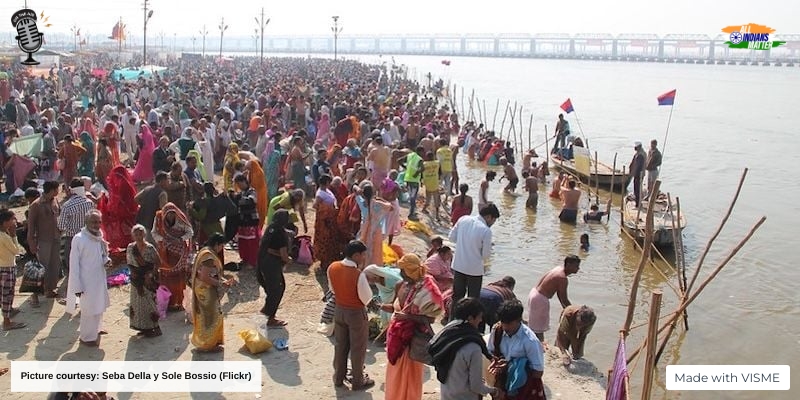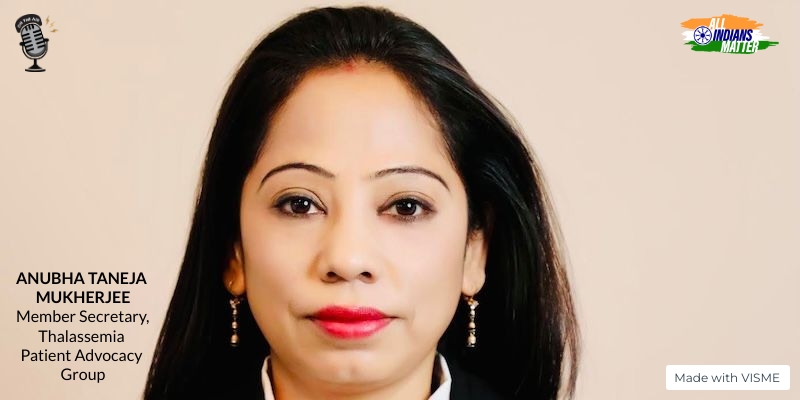Ashraf Engineer
August 6, 2022
EPISODE TRANSCRIPT km
Hello and welcome to All Indians Matter. I am Ashraf Engineer.
At the time of recording this episode, India had won 18 medals at the Commonwealth Games being held in Birmingham. No amount of praise is enough for our sporting superheroes, who have brought the country medals despite the sports system in India and not because of it. There’s no doubt that our performance, especially in major events like the Olympics and Commonwealth Games, has improved over time. Now, it’s time to build on these performances. Look at it this way: we are a nation of 1.3 billion people with more than 300 million youth of Olympic participation age. This is more or less the entire population of the US. Yet, even smaller nations, some of them smaller even than some of our states, regularly win more medals. The problem lies not just in the way we nurture our sportspersons but also in our sporting culture. What can be done to make India a sporting superpower?
SIGNATURE TUNE
Let’s look at India’s Olympic journey first. The first modern Olympic games were held in Athens in 1896. There was no Indian representation in those Games. The Calcutta-born Britisher Norman Pritchard was the only Indian to participate in the 1900 Olympics in Paris and the first Asia-born athlete to win Olympic medals – silvers in the 200-metre sprint and hurdles. It’s unclear, however, whether Pritchard competed as an Indian or as a British citizen. The colonial period saw India’s participation in six Olympic Games, winning medals in only field hockey, apart from Pritchard’s medals.
We continued to dominate field hockey until 1960, registering seven golds and a silver. It was Pakistan that first breached India’s domination in 1960, but India won again in 1964. Since then, it’s been a steady regression. India limped to a bronze in the 1968 and 1972 Games, but won gold in Moscow in 1980 – however, most of the heavyweights had boycotted those Games and the win must be seen in that light. This was the last time India won a field hockey medal in the Olympics.
India’s first Olympic medal outside of field hockey, if you don’t count Pritchards’ haul, came in 1952 in Helsinki with Khashaba Dadasaheb Jadhav winning a bronze in the men’s freestyle bantamweight boxing. After that, it was only in the 1996 Atlanta Olympics, with Leander Paes winning bronze in the men’s singles tennis event, that India won at least one medal in a non-hockey event. Since then, we’ve won at least one medal in every Olympics.
Rajyavardhan Singh Rathore won silver in the men’s double trap shooting event in 2004 in Athens. Abhinav Bindra won gold in the men’s 10-metre air rifle event in 2008 in Beijing, and other shooting medals have followed.
Karnam Malleshwari made history in Sydney in 2000, becoming the first Indian woman to win an Olympic medal – a bronze in the 69-kg weightlifting category. It was the only medal India won in those Games. Then came Mary Kom, winning a bronze in the women’s flyweight boxing in London in 2012 and Sakshi Malik winning bronze too in 2016 in Rio in the women’s 58-kg freestyle wrestling. PV Sindhu, meanwhile, bagged silver in women’s badminton at Rio.
It was in Tokyo in 2021 that our athletes bagged seven Olympic medals, which included Neeraj Chopra’s gold in the javelin throw, two silvers and four bronze medals.
Most experts divide India’s Olympics performance into two phases. Before the 1980s, it was mainly field hockey. Then nothing for 16 years, after which Indians began making a mark in other sports – tennis, badminton, shooting, boxing.
What caused this transformation? A lot of it had to do with liberalisation and the landmark reforms of 1991. The economy opened up and grew rapidly, and with that came sponsorship in significant amounts for the first time. As satellite TV came in, our exposure to the global sporting arena increased. Yes, much of the sponsorship money initially went to cricket and it was only the determination of a handful of athletes, who pushed back against the system, to bring us medals.
Yet, we must recognise that our success, which is worth celebrating, is also underwhelming – not just at the global level, but even at a regional level. Between 1990 and 2014, India’s share of medals at the Asian and Commonwealth Games improved only 3% and 1.5% respectively.
There was giant leap at the 2018 Asiad, where India sent its largest contingent ever – 572 athletes for 36 sporting events. India recorded its largest ever medal tally – 69, which included 15 gold, 24 silver and 30 bronze. Yet, India managed only eighth place overall out of 38 participating countries. China, Japan and South Korea dominated the Games. What’s more, even way smaller countries like Indonesia, Uzbekistan, Iran and Chinese Taipei, whose contingents were much smaller than India’s, placed higher in the medals tally.
That begs the question: why has India underperformed on the global stage?
The lack of infrastructure has long been blamed for it but there is a larger issue – the lack of a local sporting culture. Don’t forget, of the 22 football World Cups so far, 10 have been won by South American countries such as Brazil and Uruguay where the infrastructure was rudimentary.
The fact is that in India we rarely invest in local community sports. It’s rare for people to take the time to watch local matches or cheer their children on in local games. This is in stark contrast to the US, where school and college sportspersons are put on a pedestal and parents make it a point to watch and cheer on even toddlers’ baseball or soccer games.
Yes, we’ve had a huge change in how we develop sportspersons, using scientific methods for our elite athletes. But, unlike the world over, where potential medal winners are selected very young and nurtured, there are various barriers in India. These range from social taboos to gender and geographical bias to religious norms. Sports governance is a major problem, too, with most of the top association jobs cornered by politicians.
There may be pockets of sporting culture, for instance, the passion for football in the North-East and parts of the south, or hockey in some areas of Punjab. Unfortunately, this is not uniformly seen at the school level. Indian parents continue to place academic success over everything else, believing that’s the key to a secure future.
There is huge scope to widen interest and participation in sports, which finds mention in the government’s Khelo India programme. The most important suggestion is that schools get cracking on identifying and training children with serious sporting potential. But this argument can’t be limited to infrastructure, which would take ages to build in any case. We won’t succeed without parents and teachers, and I would say even the larger community, coming together to encourage young sportspersons and not view sports as a diversion rather than a priority.
Professional sporting leagues would widen the opportunities available for sportspersons. Just see how the Indian Premier League enabled new cricketing talent to bubble to the surface. Similar leagues have been established for kabaddi, badminton and other sports, and that’s very encouraging. Access to modern training methods, equipment, nutritionists, world-class coaches and playing alongside top international talent will show results.
The country could also look at establishing centres of training for sports other than cricket, which already has the National Cricket Academy and other initiatives.
As a start, India could choose a state for establishing a centre for a particular sport – say, football. Another state could have one for wrestling. And so on. Fifteen to 20 such hubs would make a huge difference to not just how we prepare our athletes but also substantially change our sporting culture. Many sportspersons and experts have suggested these in the past.
These should be intensive, serious sporting hubs – full-time and residential with a scientific approach towards diet and training. They must focus on holistic development rather than just sporting. This means that there must be a special emphasis on participants’ education too.
The investment for these state-of-the-art centres can come from corporate entities in the form of sponsorships while the land and permissions can be the state government’s responsibility.
These hubs won’t work unless they have the active participation and management of leading sportspersons, coaches, sports medicine specialists, fitness experts and sports psychologists.
In the end, what India needs is to change the way it views sports. Thankfully, that’s happening. By focusing on spotting and nurturing its sportspersons early, India can fulfil its potential and begin to be counted – finally – among the great sporting nations of the world.
How do you think India can change its sporting culture? Have you been part of an initiative to uplift sports at a local level? I’d love to know. Write to me at editor@www.allindiansmatter.in.
Thank you all for listening. Please visit allindiansmatter.in for more columns and audio podcasts. You can follow me on Twitter at @AshrafEngineer and @AllIndiansCount. Search for the All Indians Matter page on Facebook. On Instagram, the handle is @AllIndiansMatter. Email me at editor@www.allindiansmatter.in. Catch you again soon.






